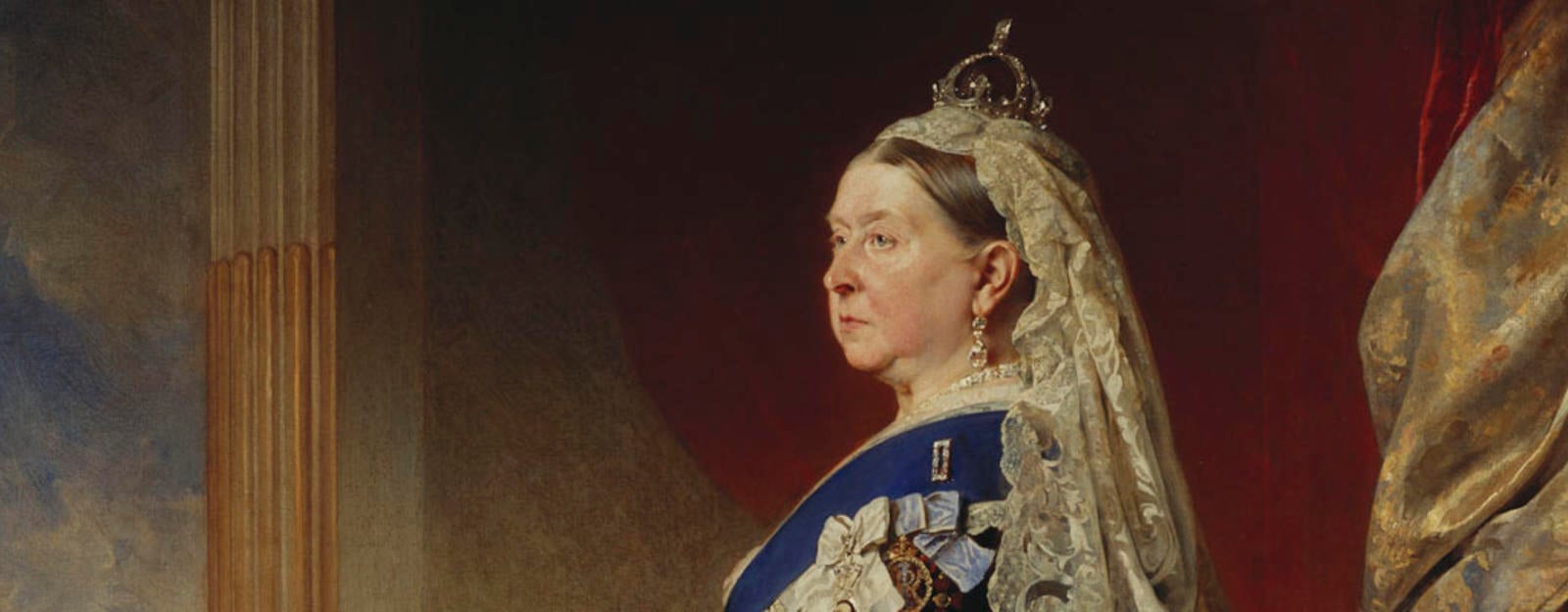Victoria, Queen of the United Kingdom (1819-1901)

- Born 1819, Kensington Palace
- Died 1901, Osborne House
Queen Victoria was the only child of Edward, Duke of Kent and Princess Victoria of Saxe-Coburg-Saalfeld, and the granddaughter of George III. She married her first cousin, Prince Albert of Saxe-Coburg and Gotha, in 1840 and they had 9 children. She reigned for 63 years.
The young Queen Victoria lived at Kensington Palace until 1837. She was a keen amateur artist, and received instruction in drawing and painting from her youth onwards. Her output was prolific, with over 4000 of her drawings, watercolours, etchings and lithographs still in the collection, prodcued over 60 years of her reign. Queen Victoria was also an avid diarist and letter-writer, and her interest in art and artists throughout her life is clear from the extensive archive of her writings.
Queen Victoria employed artists to record and commemorate royal events, personages and places. She commissioned paintings and photographs of her family, the chief events of her reign, places she had visited both at home and abroad, and of the royal residences. She was Empress of India from 1877 and some of the most beautiful portraits in the collection were made of her Indian subjects by Rudolf Swoboda. Queen Victoria received gifts of works of art from the extensive British Empire throughout her reign. She also made some significant acquisitions of historic items into the collection. The Darnley Jewel is one of the most significant surviving sixteenth-century lockets, with royal connections through its first Scottish patrons.
Queen Victoria’s commissioning of contemporary British and European art really flourished in partnership with her husband, Prince Albert. Their joint patronage of artists, craftsmen and sculptors contributed to one of the greatest eras of the arts in Britain. They frequented the Royal Academy and purchased contemporary art there, such as this subject painting by Frith of Ramsgate Sands and exchanged gifts of works of art on special occasions throughout their marriage, including sculptures from Chantrey, Theed, Marochetti and Boehm.
Franz Xavier Winterhalter was a firm favourite with Queen Victoria. He was efficient, charming and personable and able to produce the kind of works the Queen desired, from paintings of the royal family to this subject painting of nudes gifted to Prince Albert. Queen Victoria also enjoyed animal paintings by Sir Edwin Landseer, and again commissioned many works, including a portrait of Prince Albert’s favourite dog, Eos. Such patronage with personal connections extended to the decorative arts also, for example this extraordinary ‘family dog’ centerpiece.
Queen Victoria made significant practical alterations to Buckingham Palace, and purchased Osborne on the Isle of Wight. Prince Albert purchased and rebuilt Balmoral in Aberdeenshire for her. Albert's death left Victoria heartbroken. She commissioned a beautiful mausoleum, set in the grounds of Frogmore, where she too was laid to rest some forty years later. Albert was also commemorated in Triqueti's extraordinary decorative scheme and cenotaph in the Albert Memorial Chapel at St George’s, Windsor, and by the Albert Memorial located in Kensington Gardens.
Reigned: 1837-1901







